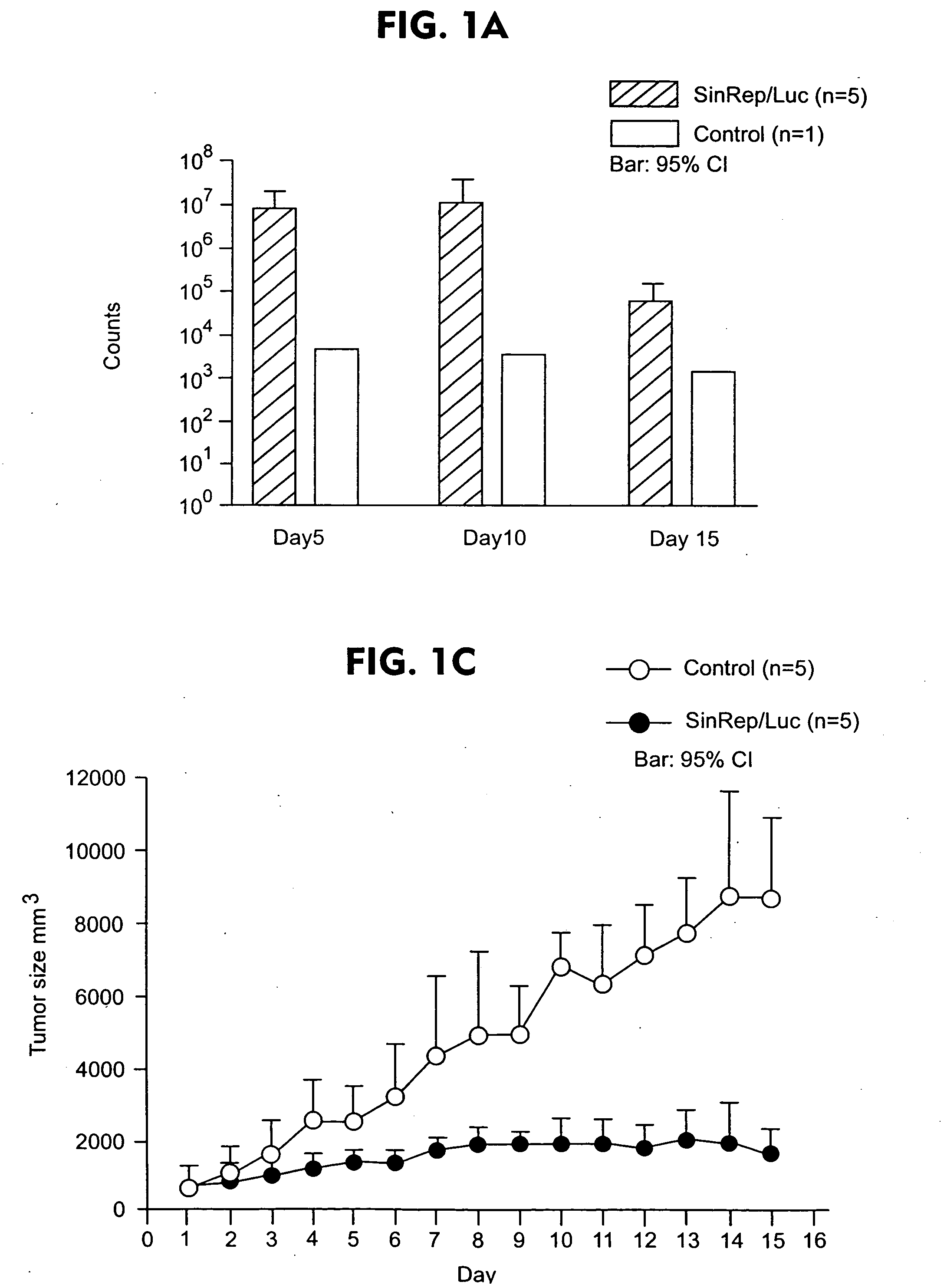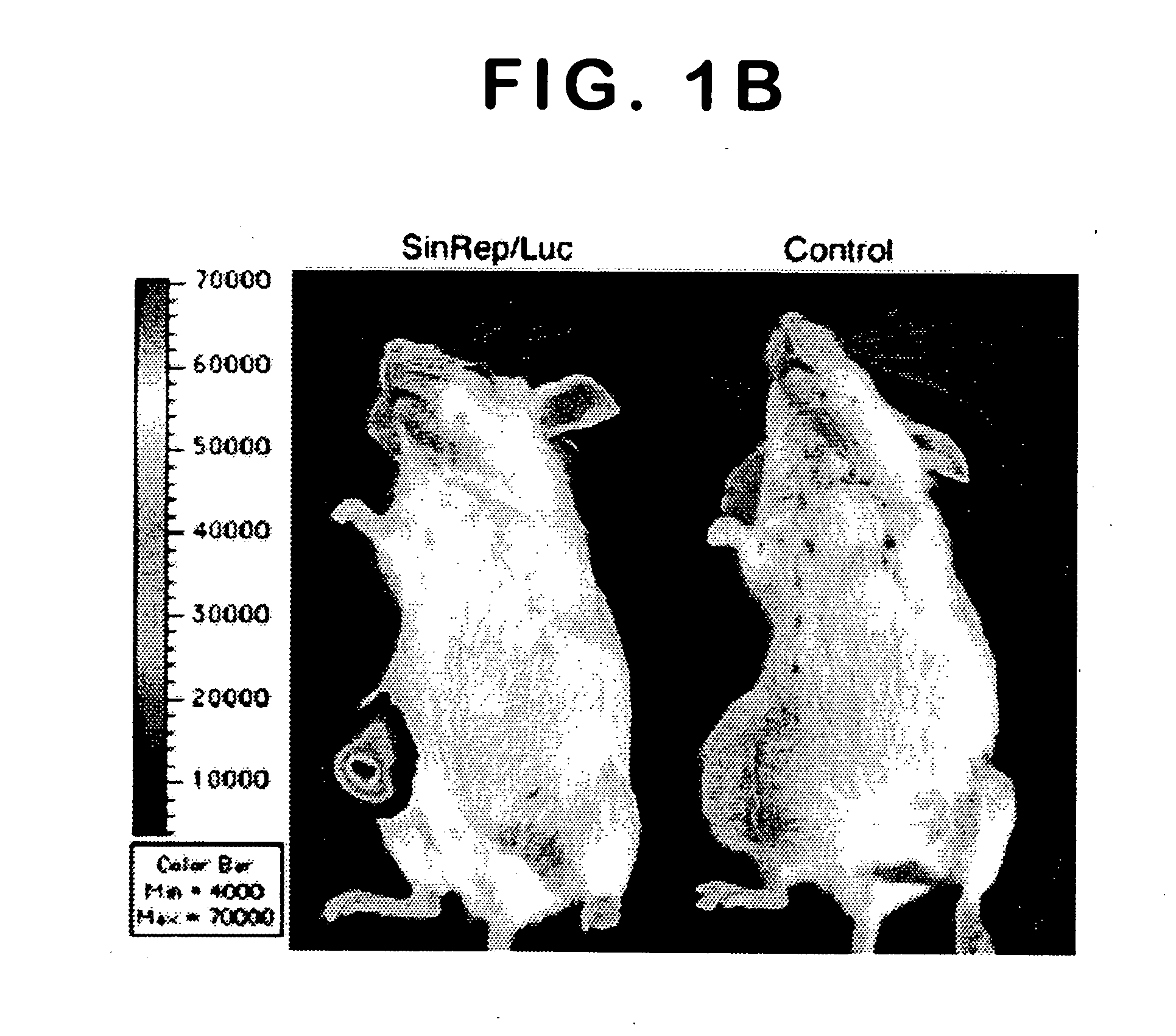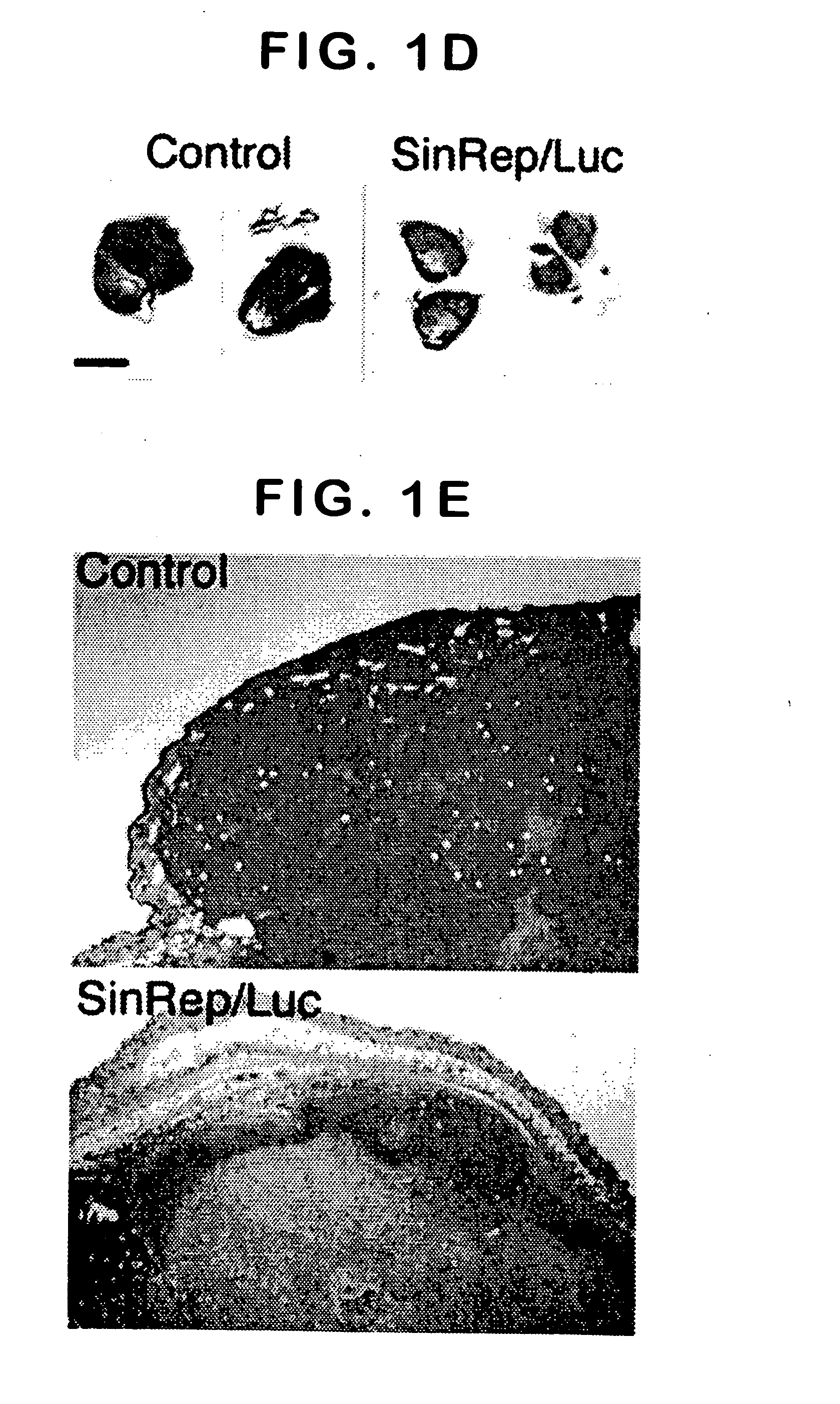Method for detecting cancer cells and monitoring cancer therapy
a cancer cell and monitoring technology, applied in the field of cancer cell detection and monitoring cancer therapy, can solve the problems of not being able ct and mri are unable to detect microscopic tumors in vivo, and using pet for monitoring cancer therapy in these regions is not suitabl
- Summary
- Abstract
- Description
- Claims
- Application Information
AI Technical Summary
Benefits of technology
Problems solved by technology
Method used
Image
Examples
example 1
SinRep / Luc Viral Vector Specifically Infects Subcutaneous (s.c.) BHK Tumors and Suppresses Their Growth
[0067] To test the potential of Sindbis viral vectors for systemic delivery and specific infection, a SinRep / Luc viral vector was injected daily, which carries a firefly luciferase gene, intraperitoneally (i.p.) to SCID mice bearing s.c. BHK tumors (FIG. 1). The daily i.p. injections of SinRep / Luc vectors was started when the tumors were approximately 500 mm3 (day 1) and the IVIS® system was used to monitor bioluminescence in the mice on days 5, 10, and 15. Control tumor-bearing mice received no SinRep / Luc treatment. On day 5, tumor specific bioluminescence that persisted until day 10 and dropped significantly on day 15 (P=0.0004, student t-test, FIG. 1a) was observed. S.c. BHK tumors on control mice generated very low background bioluminescence signals (˜103 photon counts) compared with SinRep / Luc treated tumors (˜107 photon counts). By day 10, a substantial therapeutic effect of...
example 2
Sindbis Viral Vectors Specifically Infect Intraperitoneal (i.p.) and Intrapancreatic BHK Tumors
[0069] To determine if Sindbis vectors can specifically infect BHK tumors growing at other locations, intrapancreatic tumors were established with a special BHK-derived line, BHKSINLuc2, which stably transcribes a defective Sindbis replicon RNA containing a firefly luciferase gene31. Since this cell line expresses luciferase activity in response to Sindbis infection, BHKSINLuc2 tumors as biological reporters of vector infection were used. Intrapancreatic inoculation of 1×106 BHKSINLuc2 cells resulted in tumors mostly limited to the pancreas after eight days. A single i.p. injection of a Sindbis vector SinRep / LacZ that carries a bacerial β-galactosidase gene, led to specific infection of the intrapancrestic BHKSINLuc2 tumors and induction of luciferase activities (FIG. 2a, upper panels). Without SinRep / LacZ treatment, the control mice bearing intrapancreatic BHKSINLuc2 tumor showed no biol...
example 3
Sindbis Vectors Specifically Infected Intraperitoneal Metastasized Tumors
[0071] In another set of experiments, 1×106 BHK cells were intrapancreatically inoculated in SCID mice. Intrapancreatic BHK tumors grew faster than BHKSINLuc2 tumors and resulted in metastasis throughout the peritoneal cavity (FIG. 3). Eight days after BHK cell inoculation, a single i.p. injection of SinRep / Luc vectors to mice induced specific and substantial bioluminescence signals (FIG. 3a) associated with tumor development on the diaphragm, pancreas, mesentery, and peritoneum (FIG. 3b). Background bioluminescence signals were minimal in the peritoneal cavity of tumor-free control mice that were given a single i.p. SinRep / Luc vector injection (FIG. 3a).
[0072] These results indicate that single i.p. delivery of Sindbis vectors can specifically infect the metastasized BHK tumors throughout the peritoneal cavity. Thus, Sindbis vectors, while delivered systemically, may serve as powerful tools for detecting mic...
PUM
| Property | Measurement | Unit |
|---|---|---|
| Fluorescence | aaaaa | aaaaa |
Abstract
Description
Claims
Application Information
 Login to View More
Login to View More - R&D
- Intellectual Property
- Life Sciences
- Materials
- Tech Scout
- Unparalleled Data Quality
- Higher Quality Content
- 60% Fewer Hallucinations
Browse by: Latest US Patents, China's latest patents, Technical Efficacy Thesaurus, Application Domain, Technology Topic, Popular Technical Reports.
© 2025 PatSnap. All rights reserved.Legal|Privacy policy|Modern Slavery Act Transparency Statement|Sitemap|About US| Contact US: help@patsnap.com



